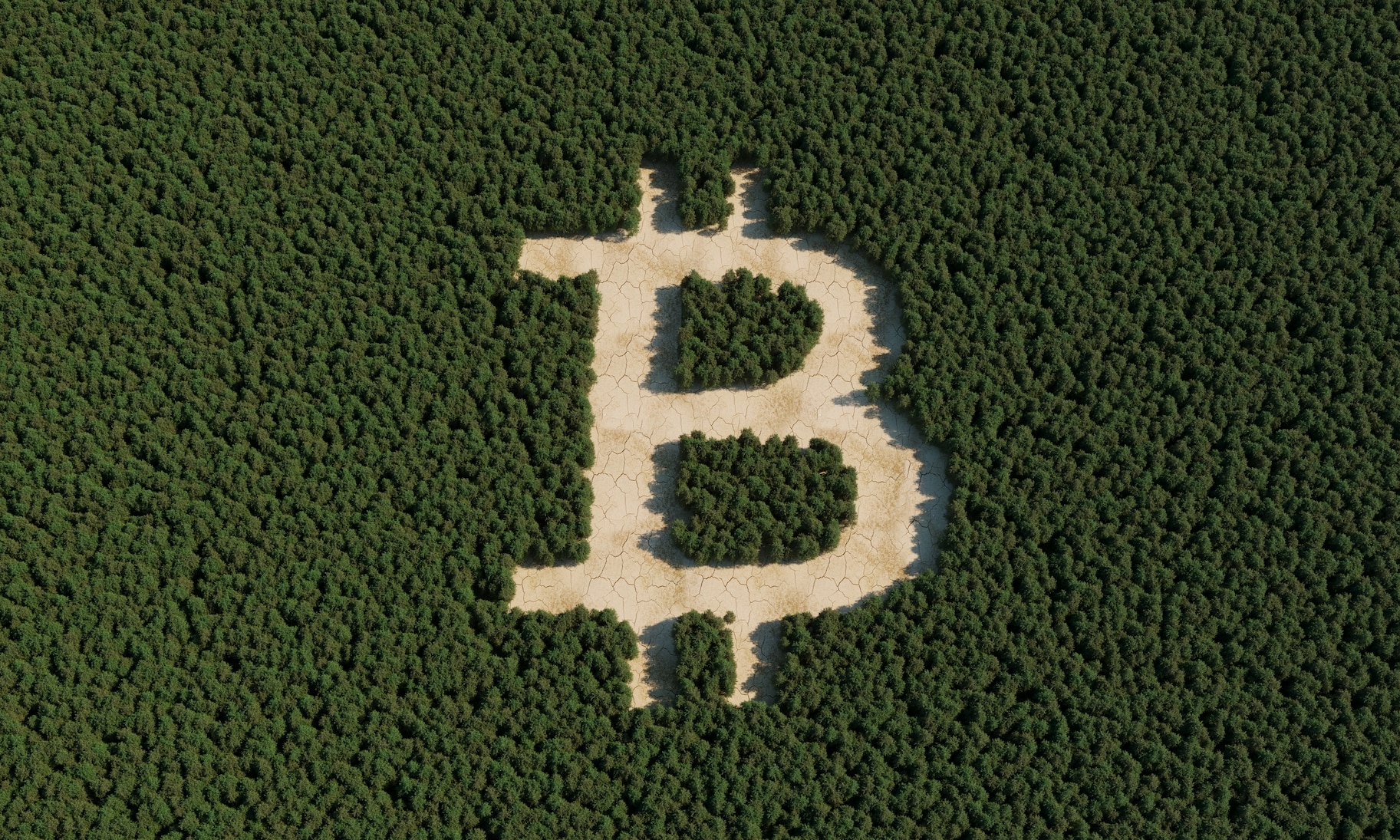Create a free profile to get unlimited access to exclusive videos, sweepstakes, and more!
Bitcoin could be as damaging to the climate as beef or oil production
Decentralizing money, but at what cost?

When bitcoin first hit the scene, many were enamored with the idea of a decentralized currency. In a world where money almost always funnels through centralized banks there was a certain allure in a currency which was created and controlled by the people using it. As illustrated in Banking on Bitcoin (now streaming on Peacock!) there was also the promise of quick riches which pulled a growing number of people into a new and exciting, though poorly understood, subculture. Then the cracks started to show.
Putting aside the wildly value and the lack of real-world ways to use it, there are some considerable environmental costs associated with digital currencies which cause unwanted additional pressure on an already overtaxed ecosystem.
As bitcoin and other digital currencies gained popularity, researchers have attempted to quantify just how costly mining coins is to the environment. In terms of raw energy, some estimates put the total cost of cryptocurrency at 150 terawatt-hours annually. If cryptocurrency were a country, it would be the 27th most energy hungry country in the world. Recently, researchers measured the environmental impact of cryptocurrency in another way. Before we can get into that, however, it might help to understand how digital currencies are created.
If you’re in the market for some bitcoin of your own, the easiest way to get your hands on it is to buy it using conventional money. There are countless services which will happily take your government-approved monies in exchange for crypto, but it’s going to cost you. At the time of this writing, bitcoin is selling for $19,234.50 per coin, but that’s likely to change over the next few minutes, let alone by the time this is published. The cost of a coin has swung roughly $400 throughout the day, such is the nature of bitcoin. If purchasing something which might plummet in value by the time you get a hold of it doesn’t appeal to you, you could always mine new coins yourself.
Mining is the way that new bitcoins enter circulation, and it all happens with math. The whole decentralization scheme only works because there are folks using powerful computers to validate transactions. Those validations occur through the solving of complicated math problems. Anyone can do this, provided they have the requisite hardware. That’s what mining is. If you set up your computer to solve these problems and help to validate transactions, you are occasionally rewarded with a shiny new coin, freshly pulled from the cyber mines.
The downside is that crunching those numbers takes a lot of energy, and that energy is largely acquired through the harvesting and burning of fossil fuels like coal. It’s mining all the way down. What’s more, bitcoin is only awarded to the first person to solve a particular problem and that’s not something you can really control. There’s a certain amount of chance involved. It’s almost as if instead of the mega millions, the lottery released jackpots of $20,000 to a few hundred people every day. Your odds of winning might be better than a conventional lottery but in exchange for your ticket, you have to light a tanker truck on fire.
One way of measuring the environmental and economic costs of a given activity is to compare the costs and benefits, one against another. One could, for instance, calculate the cost of climate damage as a result of beef production and then calculate how much money is generated from that beef. The process is relatively simple, we simply look at the total profits of the beef industry compared to how much we’ll pay to deal with the climate impact of those profits. In this way, we can determine what percentage of the value is eaten up by the downstream costs. In the case of beef, about 33 cents from every dollar produced is lost to climate change.
Pulling crude oil out of the ground to produce gasoline costs 41 cents on the dollar, in climate damage. Oil and beef are good yardsticks for this sort of calculus because they are among the most damaging to the environment.
Researchers put bitcoin through the same calculus and discovered a 35 cent climate cost for every dollar gained on average, putting it on par with beef and crude oil. In fact, the average is hiding some fairly frightening numbers. Roughly a third of the time the environmental cost of bitcoin exceeded 50% of the value. Even worse, the climate cost exceeded the total value 6.4% of the time, with a peak cost of 156 percent.
With bitcoin, as with other industries, we have to ask ourselves when the costs become too much. Certainly, when the cost of mining a bitcoin exceeds the value being created, we’re quite literally burning money in addition to fossil fuels. Even when the relative costs are low, the overall cost to the environment is high and rising. It’s estimated that emission from cryptocurrencies will hit 0.9% of total global emission by 2030 and, unless something about mining cryptocurrency changes, it’s going to keep getting worse.


























